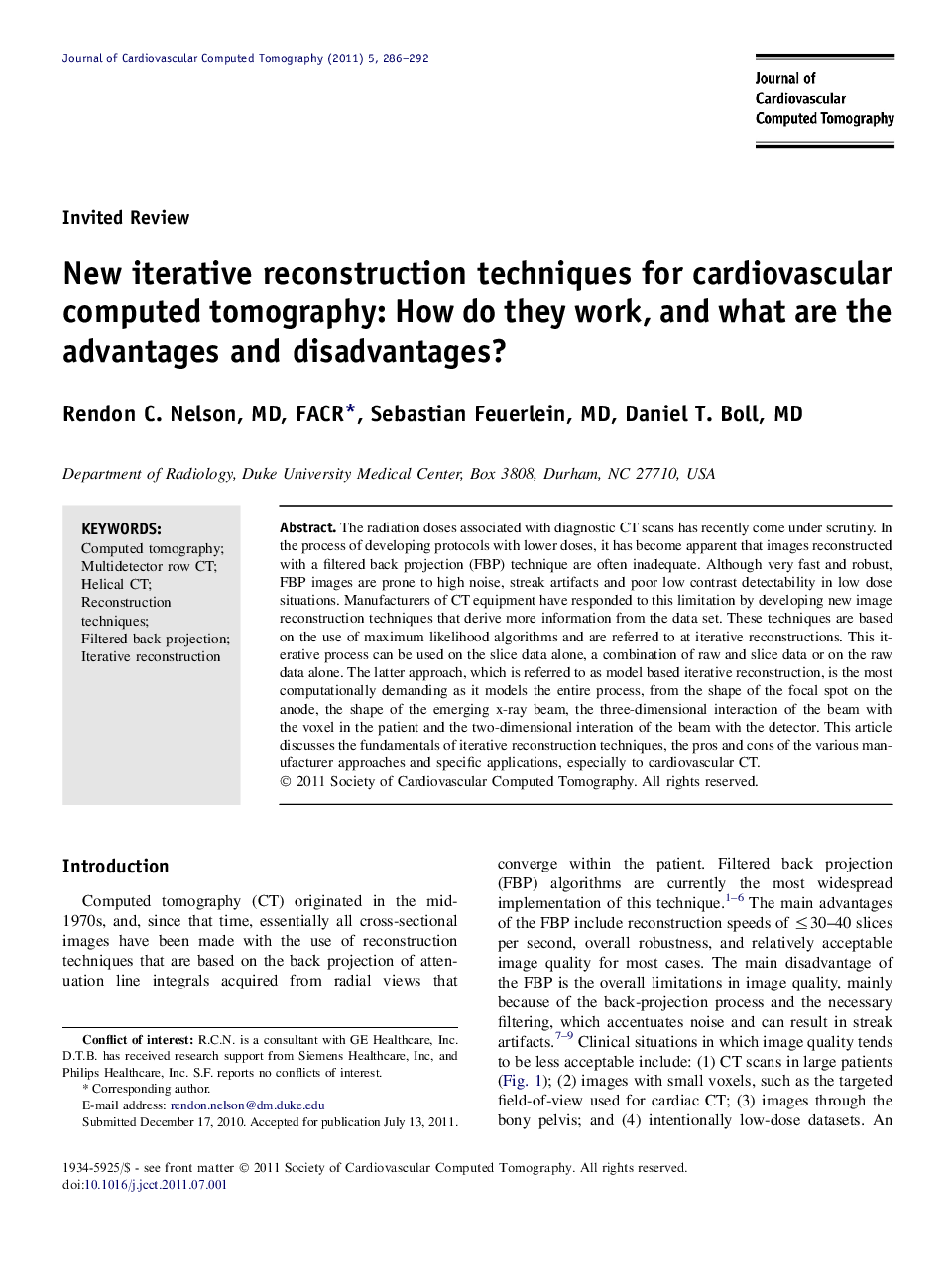| Article ID | Journal | Published Year | Pages | File Type |
|---|---|---|---|---|
| 2964767 | Journal of Cardiovascular Computed Tomography | 2011 | 7 Pages |
The radiation doses associated with diagnostic CT scans has recently come under scrutiny. In the process of developing protocols with lower doses, it has become apparent that images reconstructed with a filtered back projection (FBP) technique are often inadequate. Although very fast and robust, FBP images are prone to high noise, streak artifacts and poor low contrast detectability in low dose situations. Manufacturers of CT equipment have responded to this limitation by developing new image reconstruction techniques that derive more information from the data set. These techniques are based on the use of maximum likelihood algorithms and are referred to at iterative reconstructions. This iterative process can be used on the slice data alone, a combination of raw and slice data or on the raw data alone. The latter approach, which is referred to as model based iterative reconstruction, is the most computationally demanding as it models the entire process, from the shape of the focal spot on the anode, the shape of the emerging x-ray beam, the three-dimensional interaction of the beam with the voxel in the patient and the two-dimensional interation of the beam with the detector. This article discusses the fundamentals of iterative reconstruction techniques, the pros and cons of the various manufacturer approaches and specific applications, especially to cardiovascular CT.
